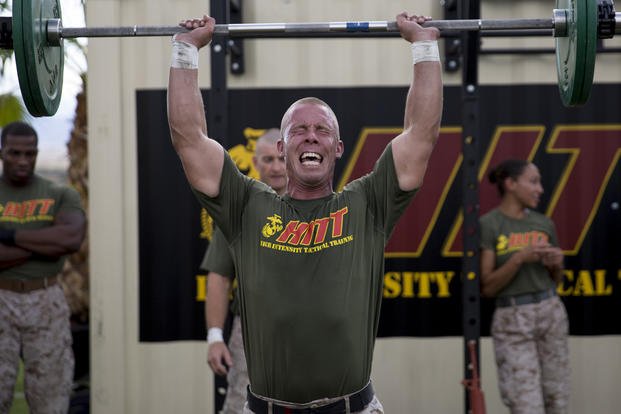A Navy chief emailed me about his recent shoulder injury. Sometimes, freak accidents can occur at the strangest of times. He writes:
"I am an avid lifter. I lift all the time and have done bodybuilding competitions, so you would think I would be pretty strong. At only 30 years old, I was closing the trunk of my car with one arm as I was walking around to the side of the car and dislocated my shoulder. I read your Shoulder Workout article and noticed a few new exercises I should try. In fact, they are what my physical therapist gave me to do with rubber bands. When this heals, what is next?"
Oh, yes, the shoulder dislocation. That is quite an injury to occur on such a young guy doing something as common as closing a car trunk. The bad thing about this injury is that a dislocation can occur again, but you can prevent another injury by listening to your physical therapist and doing the light weight/rubber-band shoulder exercises that strengthen the shoulder girdle.
Eight ligaments and 15 muscles directly affect the shoulder and its movements. Because it is such a versatile joint, the shoulder easily can get injured when you fall, throw an object or even close a car trunk. Being a bodybuilder is a great exercise and usually means your major muscle groups are pretty strong and well-trained.
However, a common error with bodybuilders and as well as other athletes like runners or cyclists is that they tend to neglect muscular balance. Whether that imbalance is in the hamstrings/thighs, abdominals/lower back, chest/upper back, hips or shoulder girdle, people who focus only on major muscle groups or just cardiovascular activities can injure themselves as easily as an unconditioned person.
The shoulder muscles you should get to know well are your rotator cuff muscles. A common acronym is SITS, which stands for:
|
Rotator Cuff Muscles: SITS |
|
Subscapularis |
|
Infraspinatus |
|
Teres Minor |
|
Supraspinatus |
These muscles and connective tendons form the rotator cuff can be strengthened to "tighten up" the shoulder. Those 6-8 exercises done with rubber bands or five-pound dumbbells are highly effective in working these muscles. Heavier weight should not be used when exercising the SITS muscles, as these are easily injured.
Here are a few tips to help you to reduce the chances of injury to the shoulder again:
1. Stretch shoulders well
Stretch shoulders well after a light warmup, especially before lifting or throwing. See "The Stretching Plan" in the Military.com article archive.
2. Eliminate risky workouts from your routine
Eliminate the behind-the-neck military presses/pull-downs/upright rows from your routine. These can dislocate your shoulder and strain the SITS muscles. Shoulder impingement can occur when going through a full range of motion of these exercises.
3. Don't lift too much weight
Don't ever lift a one-rep max effort on military presses. Too much weight on your shoulders is not good. The shoulder joint barely can handle body weight, much less greater than body-weight lifts overhead.
4. Do not hang fully from a pull-up bar
Do not hang fully from a pull-up bar unless your shoulders remain tight. (No relaxed dead hang.) This causes the only muscles working, other than your hand-grip muscles, are your SITS muscles when hanging relaxed on a pull-up bar.
There is nothing wrong with lifting heavy weights if you are into that. I used to be a powerlifter and enjoy a heavy cycle every now and then. However, you must remember the balance of the core, legs and shoulders. You do not need to replace your workout; just supplement it with a four- to five-minute shoulder routine on your upper-body days.
Stew Smith is a former Navy SEAL and fitness author certified as a Strength and Conditioning Specialist (CSCS) with the National Strength and Conditioning Association. Visit his Fitness eBook store if you're looking to start a workout program to create a healthy lifestyle. Send your fitness questions to stew@stewsmith.com.
Want to Learn More About Military Life?
Whether you're thinking of joining the military, looking for fitness and basic training tips, or keeping up with military life and benefits, Military.com has you covered. Subscribe to Military.com to have military news, updates and resources delivered directly to your inbox.


















